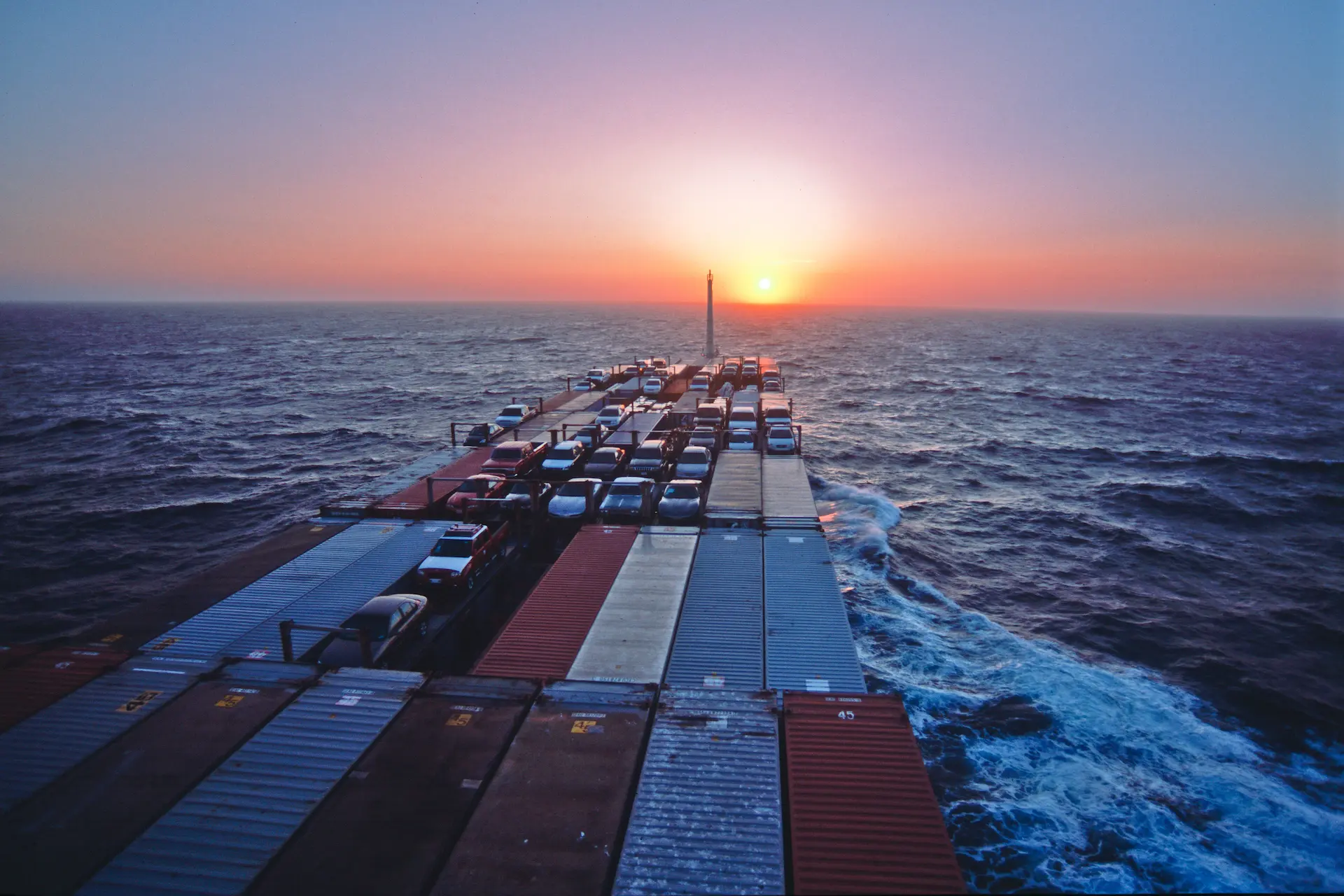How is Ocean Warming Impacting the Shipping Industry?
As the ocean warms, rough—and expensive—seas ahead for shipping

As deeply troubling reports continue to come in about ocean waters hitting historic hot temperatures, sectors like global shipping are trying to understand the consequences of a warmer ocean and what can be done to stop the heating. Some in the industry see the warming as an opportunity, as passages through the Arctic open for longer periods, even going so far as to claim there will be lower overall greenhouse gas (GHG) emissions from the shorter voyages. Recent science doesn’t support this optimism, as new studies show that the increased release of Black Carbon, one of the most potent climate change forcers—as well as soot, carbon dioxide, methane and ozone from more traffic in the Arctic—could lead to a 20% increase in the global heating that is causing warmer ocean temperatures.
The ocean has already absorbed 90% of the heat trapped by greenhouse gases and 26% of the carbon dioxide emitted by humans burning fossil fuels. While this has moderated atmospheric and land temperatures to some degree, the ocean can’t keep this up, and its ability to regulate the climate becomes compromised as we continue to burn fossil fuels. Warmer water also expands and raises sea levels as well as holds less oxygen. So, we’re seeing the ocean heat up, lose oxygen and get bigger. A warming ocean will supercharge storms and is already having devastating impacts on marine wildlife and ecosystems that people rely on, such as mangroves, reefs and fisheries.
Get Ocean Updates in Your Inbox
Sign up with your email and never miss an update.
The biggest threats to the maritime shipping sector are likely to be the increased frequency and intensity of weather hazards driven by ocean warming. More ocean heat provides more fuel for hurricanes and drives heavier rainfall and snowstorms, as well as shifts in weather patterns so that some areas face rainstorms and flooding while others face worsening drought conditions and wildfire risks. As we’re seeing right now at the Panama Canal, drought and water shortages will also make passage through canals or rivers less reliable and delay vessels.
These changes in weather patterns threaten the entire shipping industry—vessel owners and operators, cargo owners and ports. There are also secondary effects on global supply chains that could affect economies more broadly. Vessel owners and operators face risks of delays in departures and entries to ports and more frequent rerouting with accompanying costs, as well as damage to their ships and risk to crews. Cargo owners’ risks include damage and loss of their cargo, costly delivery delays and potentially higher demurrage and detention fees.
As the landside linchpin for global trade, many of the delays affecting operators and shippers are due to the impact of extreme weather on ports, which face costly damage to their infrastructure and lengthy closures. According to recent analyses from the University of Oxford and Vrije Universiteit Amsterdam of the impacts of extreme weather on ports, the total climate risk could be worth up to US$7.6 billion (£6.2 billion) each year. In addition to these direct costs, port closures and reconstruction due to storms and other climate hazards put an estimated US$67 billion of trade at risk annually.
Finally, the costs of upgrading port infrastructure to be more resilient in the face of sea level rise, storm surge and other climate-driven weather extremes are substantial, with one analysis estimating that raising the height of existing port terminals alone could cost more than US$63 billion by the end of the century. Note that there is no simple formula that ports can use to determine the scale of investment needed. Anticipating the rate of sea level rise is particularly challenging due to uncertainties in the climate system. Ports that underestimate the rate and height of sea level rise in planning facility adaptations would not only waste money on the infrastructure investment but also on closures and reconstruction costs and then become inundated anyway. Of course, port adaptation plans that anticipate larger changes require longer lead times and more money.
There is no doubt that the shipping sector faces potentially crippling costs and disruptions from the impacts of ocean warming and global warming generally. However, the sector also is a major contributor to the climate crisis, including the rapid rise in ocean temperatures. Commercial shipping’s reliance on energy-dense but dirty fossil fuels generates approximately one billion metric tonnes of GHGs every year, as well as black carbon and soot. As mentioned above, emissions of the latter, particularly in the Arctic, are significant to radiative heating of the atmosphere. As climate catastrophes threaten to debilitate the shipping sector, the industry must take immediate steps to eliminate its GHG emissions, as well as black carbon and soot. Early action includes maximizing energy efficiency of vessels through technical and operational measures such as wind propulsion and slow steaming; developing and deploying zero- and near-zero lifecycle emission alternative fuels; and investing in the infrastructure needed for resilient ports that can support the transition of the sector. Ship owners and operators, fuel producers and port authorities can take these steps now. However, early movers face significant risk, so it is imperative that governments, regional bodies and the International Maritime Organization (IMO) establish regulatory frameworks that provide certainty to industry on the direction and pace of the transition to zero-emission shipping and finance that can leverage private investment. Ocean Conservancy is spearheading a global, multiyear campaign with the long-term goal of fully decarbonizing global shipping, including sustained engagement at the IMO to push for Paris-aligned ambition and strong binding policy measures and efforts to shore up the U.S. as a national policy leader. There is no time for further delays. Maritime shipping must do its part to tackle climate change. But as the rapid increase in ocean temperatures proves, it needs to be just one part of an all-sectors clean-energy transition.